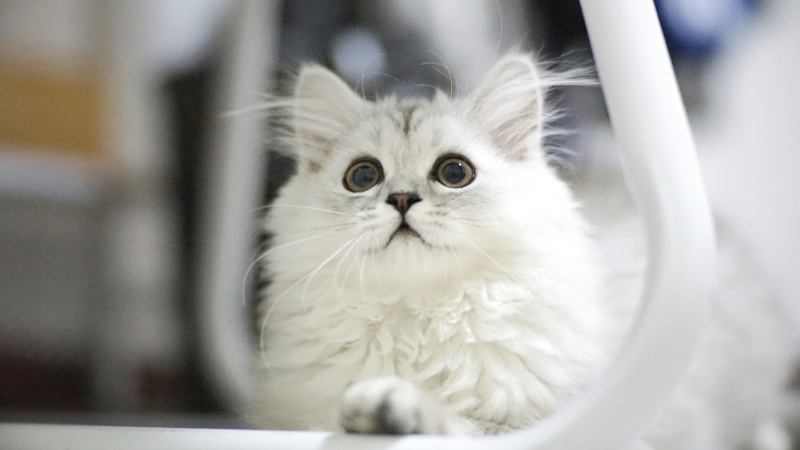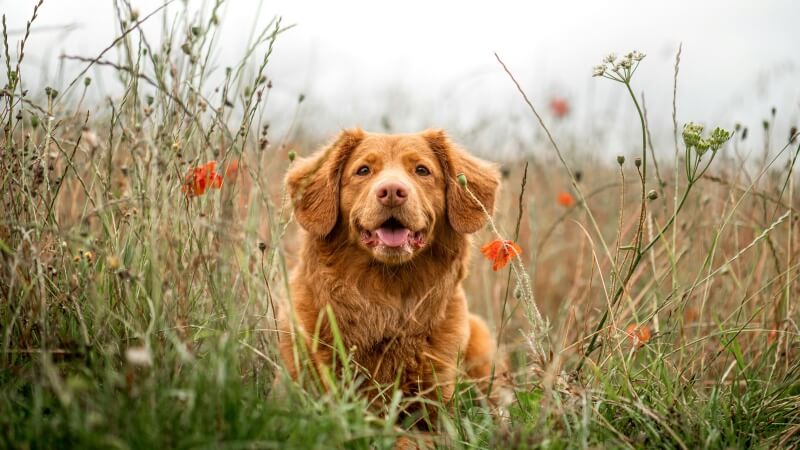
How To Craft A Cozy Cat Vest From Fabric Strips
Have you ever seen your feline friend lounging around and thought, “What could possibly make this picture more adorable?” The answer is simple: a cat

Using a cat harness is important for several reasons. It provides safety and control during outdoor adventures, prevents cats from escaping or getting lost, allows for supervised exploration, facilitates leash training, and enables travel and vet visits with ease. Harnesses ensure the well-being and security of our feline friends.
Tactical cat harnesses offer numerous benefits for both cats and their owners. They provide enhanced control and safety during outdoor excursions, allowing cats to explore while remaining secure.
The durable construction and functional features enable training, attachment of accessories, and improved visibility. Tactical harnesses empower adventurous cats and promote a stronger bond between feline companions and their human counterparts.
The purpose of this outline is to guide cat owners in choosing the perfect tactical cat harness.
It provides a structured overview of the key topics and considerations, including understanding tactical harnesses, factors to consider, matching cat’s needs, popular brands, training tips, maintenance, and additional accessories.
It aims to equip cat owners with the knowledge to make an informed decisions and ensure the safety and comfort of their feline friends.
Understanding tactical cat harnesses involves knowing their definition and features, such as durable materials and specialized construction.
Key components, like secure closures and reflective elements, along with design considerations, ensure functionality and safety for adventurous cats.
A tactical cat harness is specifically designed for active and adventurous feline companions. It typically features sturdy construction using durable materials, such as nylon or polyester.
These harnesses often incorporate multiple attachment points for leashes or accessories, adjustable straps for a secure fit, and additional features like reflective strips or pouches for convenience during outdoor activities.
Tactical cat harnesses are crafted using high-quality materials and robust construction techniques. Commonly, they employ durable fabrics like nylon or polyester for strength and longevity.
Reinforced stitching ensures durability, while adjustable straps and buckles offer a customizable fit. This construction guarantees reliability and security during outdoor adventures with your feline friend.
Key components of a tactical cat harness include secure closures, adjustable straps, and leash attachment points. These elements ensure a snug and escape-proof fit while providing control and mobility.
Design considerations involve ergonomic shaping for comfort, breathable materials for airflow, and reflective accents for enhanced visibility during low-light conditions.
These components and design features combine to create a functional and reliable tactical cat harness.
When choosing a tactical cat harness, important factors to consider include finding the right size and fit, ensuring the presence of safety features like secure closures, prioritizing comfort and mobility for your cat, and evaluating the harness’s functionality and convenience features for your specific needs.
Size and fit considerations involve measuring your cat accurately to ensure a proper fit. Additionally, looking for harnesses with adjustable straps and sizing options helps accommodate different body types for optimal comfort and security.
Measuring your cat correctly is crucial for a proper harness fit. Measure the girth around their chest and neck, ensuring the harness is snug but not too tight. Consult size charts provided by manufacturers to select the appropriate size based on your cat’s measurements.
Having adjustability options in a cat harness is important to accommodate different body types. Look for harnesses with adjustable straps, both on the chest and neck, to ensure a comfortable and secure fit for cats of varying sizes and shapes.
Safety features of a tactical cat harness include secure closures and buckles to prevent accidental escapes, reinforced stitching and durable materials for longevity, and reflective elements for enhanced visibility during low-light conditions.
Secure closures and buckles are crucial safety features in a cat harness. Look for options with reliable and robust closures, such as snap buckles or quick-release mechanisms, to ensure that your cat remains securely and comfortably fastened in the harness during outdoor adventures.
Reinforced stitching and long-lasting materials are vital for a cat harness’s lifespan and dependability. Strong stitching guarantees that the harness can survive the demands of outdoor activities, while robust fabrics like nylon or polyester resist wear and tear, keeping the harness intact and secure.
Reflective elements in a cat harness are important for enhancing visibility, especially during low-light conditions. These reflective components, such as strips or patches, help make your cat more visible to others, improving safety and reducing the risk of accidents during nighttime or dimly lit situations.
A cat harness prioritizes comfort and mobility by using soft and breathable fabrics, an ergonomic design that allows for natural movement, and the addition of padding and adjustable straps for a pleasant and secure fit.
Soft and breathable materials are key for ensuring comfort in a cat harness. Look for options made from gentle fabrics like mesh or padded nylon, which provide a comfortable fit while allowing air circulation, preventing overheating, and reducing irritation for your feline friend.
An ergonomic design in a cat harness enables natural movement and flexibility. Look for harnesses that contour to the cat’s body, allowing unrestricted motion.
These designs prevent discomfort, chafing, and restrictions, ensuring that your cat can move comfortably during outdoor activities.
Padding and adjustable straps contribute to the comfort of a cat harness. Opt for harnesses with cushioned padding in key areas to prevent rubbing or pressure points.
Adjustable straps allow for a customized fit, ensuring optimal comfort for your cat during walks or adventures.
Functionality and convenience in a cat harness are achieved through features like leash attachment points and control options, pouches or pockets for carrying essentials like treats or waste bags, and the availability of customizable patches and accessories for personalization and style.
Leash attachment points and control options are essential for the functionality of a cat harness.
Look for harnesses with sturdy and reliable attachment points that allow for secure leash attachment and various control options, such as a handle or multiple attachment points, providing better maneuverability and control during walks or outings.
Pouches or pockets on a cat harness offer convenient storage for carrying essentials during outdoor adventures.
These compartments allow you to carry items such as treats, waste bags, or small personal belongings, ensuring you have everything you need within reach while keeping your hands free.
Customizable patches and accessories add a touch of personalization and style to a cat harness.
Look for harnesses that feature patches with Velcro attachments, allowing you to attach unique patches or tags, or harnesses that offer compatibility with additional accessories, such as ID tags or small gear pouches.
Consider your cat’s activity level and energy requirements, temperament and behavior features, whether they live inside or outdoors, and any unique demands they may have, such as training requirements or the need for additional help, when analyzing their needs and personality.
Assessing your cat’s activity level and energy requirements is crucial when choosing a harness. Active and energetic cats may benefit from a harness that provides freedom of movement, while less active cats may require a more supportive and comfortable harness for their lower energy levels.
Considering your cat’s temperament and behavior is important in selecting a suitable harness. Anxious or skittish cats may benefit from a harness that offers gentle handling and calming features, while confident or curious cats may require a harness with secure closures and control options for their adventurous nature.
Taking into account your cat’s indoor vs. outdoor lifestyle is vital when choosing a harness.
If your cat primarily stays indoors, a comfortable and lightweight harness for supervised outdoor exploration may be ideal.
For outdoor cats, a more durable and secure harness is necessary for their regular outdoor activities.
Considering your cat’s specific needs is crucial when selecting a harness. If your cat requires training, look for a harness with training features or attachment points for rewards.
Cats needing additional support may benefit from a harness with an ergonomic design or accessories for mobility assistance.
When matching your cat’s needs with harness features, consider the requirements of active and adventurous cats, harnesses that provide comfort for anxious or skittish cats, support for senior or injured cats, and features for training-oriented cats.
For active and adventurous cats, look for harnesses with secure closures and an escape-proof design.
Additionally, prioritize options that offer freedom of movement and durability to withstand their energetic explorations.
When choosing a harness for active and adventurous cats, prioritize options with secure closures and an escape-proof design.
Look for features like sturdy buckles or snap closures that ensure your cat remains safely and securely fastened in the harness during their outdoor escapades.
Harnesses that allow for freedom of movement and durability are essential for energetic and adventurous cats.
Look for designs that allow for complete freedom of movement, such as adjustable straps and flexible fabrics.
Furthermore, favor harnesses constructed of long-lasting materials that can handle the demands of outdoor activities.
For anxious or skittish cats, prioritize harnesses with a comfortable and non-restrictive fit that doesn’t add to their anxiety.
Look for options with gentle handling features and calming elements to help keep them at ease during outings.
When selecting a harness for anxious or skittish cats, prioritize options that offer a comfortable and non-restrictive fit.
Look for harnesses with adjustable straps and soft materials to ensure your cat feels at ease and not overwhelmed by the harness.
Harnesses with gentle handling and calming features are beneficial for anxious or skittish cats. Look for options with padded contact points, soothing materials, or stress-reducing elements like pheromone-infused patches to provide a sense of comfort and help alleviate anxiety during outings.
For senior or injured cats, prioritize a harness that provides support and comfort. Look for options with padding to protect sensitive areas and consider harness accessories that offer mobility assistance, such as handles or support slings.
When choosing a harness for senior or injured cats, prioritize options that offer support and padding. Look for harnesses with extra cushioning in key areas to provide comfort and protect sensitive joints or injured areas, ensuring your cat can move with ease and minimal discomfort.
For senior or injured cats, consider harnesses that offer mobility assistance and compatible accessories. Look for harnesses with built-in handles or attachment points for support slings or walking aids, providing additional stability and assistance to help your cat move more comfortably.
When selecting a harness for training-oriented cats, prioritize options with control and training features. Look for harnesses with adjustable straps, training handles, or attachment points to reward-based training tools, enabling effective and positive training sessions.
When choosing a harness for training-oriented cats, prioritize options with control and training features. Look for harnesses with features like adjustable straps, back handles, or front leash attachment points, which provide better control and facilitate effective training sessions for your feline companion.
Harnesses with attachment points for rewards or tools are beneficial for training-oriented cats. Look for options that offer additional loops, D-rings, or Velcro panels where you can attach treats, clickers, or other training aids to reinforce positive behaviors during training sessions.
OneTigris, TankTinker, and PETODAY are highly regarded brands when it comes to tactical cat harnesses.
Known for their excellent craftsmanship, durability, and innovative designs, these brands offer a wide range of options to meet the needs of adventurous and active cats.
OneTigris is a popular tactical cat harness brand known for its quality and functionality. Their harnesses often feature durable materials, adjustable straps, and multiple attachment points for versatility.
Pros include a wide range of sizes and designs, while some users find the sizing may run small as a potential con.
TankTinker is a renowned tactical cat harness brand known for its innovative features. Their harnesses often incorporate sturdy construction, escape-proof designs, and comfortable padding.
Pros include excellent durability and secure closures, while some users find the harnesses may have limited size options as a potential con.
PETODAY is a notable brand in the tactical cat harness market, offering a range of features to cater to various needs. Their harnesses often include adjustable straps, reflective elements for safety, and breathable materials.
Pros include a comfortable fit and attractive design, while some users have reported issues with durability as a potential con.
When training your cat to wear a tactical harness, introduce it gradually, using positive reinforcement techniques and reward-based training to promote acceptance.
Once comfortable, proceed to leash training and gradually expose your cat to outdoor environments while ensuring their safety and comfort.
Introducing the harness gradually is crucial when training your cat. Start by placing the harness near them, allowing them to sniff and investigate it.
Gradually progress to draping the harness over their body before eventually fastening it, ensuring they feel comfortable and at ease throughout the process.
Positive reinforcement techniques are essential for training your cat to wear a harness. Use treats, praise, and rewards to associate the harness with positive experiences.
Reward your cat for calm behavior and gradually increase the duration they wear the harness, creating a positive association with it.
Harness acceptance can be achieved through reward-based training. Use treats or other rewards to reinforce positive behavior while wearing the harness.
Gradually increase the duration of wearing the harness, rewarding your cat each time, to help them associate the harness with positive experiences and acceptance.
Leash training and outdoor exposure are important steps in training your cat to wear a harness.
Start in a controlled environment, gradually introducing the leash and allowing your cat to explore while providing guidance.
With time and patience, your cat can become accustomed to outdoor walks and adventures in their harness.
Maintaining and caring for a tactical cat harness involves regular inspection and cleaning to ensure its condition. Proper storage, such as keeping it in a dry and secure place, can prolong its longevity.
If any parts or the harness itself become worn out, it’s important to replace them promptly for continued safety and functionality.
Regular inspection and cleaning are vital for maintaining a tactical cat harness. Check for any signs of wear, loose stitching, or damaged components.
Clean the harness according to the manufacturer’s instructions, using mild detergent and gentle hand washing, to keep it in good condition and free from dirt or odors.
An effective method of storing is essential to preserving the durability of a tactical cat harness. It should be kept dry, clean, and in a space with good ventilation to avoid moisture or mold formation.
Avoid subjecting it to intense heat or sunshine, which can deteriorate the materials and impair performance over time.
Replacing worn-out parts or the entire harness is essential for your cat’s safety. Regularly inspect the harness for signs of damage, such as frayed straps or weakened buckles.
If any components are compromised, replace them promptly to ensure the harness remains secure and reliable during use.
In conclusion, choosing the perfect tactical cat harness involves considering various factors, such as size, safety features, comfort, functionality, and your cat’s individual needs.
By understanding the definition, features, materials, and design considerations, you can make an informed decision to provide your feline friend with a comfortable and secure harness.
With the right harness, you can enjoy outdoor adventures and training sessions while keeping your cat safe and happy. Remember to maintain and care for the harness to ensure its longevity and optimal performance.
Gear up your feline friend with the perfect tactical cat harness and embark on exciting journeys together.


Have you ever seen your feline friend lounging around and thought, “What could possibly make this picture more adorable?” The answer is simple: a cat

The moment you consider a dog hunting vest for your adventurous companion, you’re stepping into a world where safety meets functionality. This vest is not

The concept of a dog cooling vest is a game-changer for pet owners looking to enhance their dog’s comfort during those relentless summer days. Imagine

When you first consider crafting a tactical dog vest, it’s not just about embarking on a fun DIY project; it’s about ensuring your furry companion’s

Have you ever seen your feline friend lounging around and thought, “What could possibly make this picture more adorable?” The answer is simple: a cat

The moment you consider a dog hunting vest for your adventurous companion, you’re stepping into a world where safety meets functionality. This vest is not

The concept of a dog cooling vest is a game-changer for pet owners looking to enhance their dog’s comfort during those relentless summer days. Imagine

When you first consider crafting a tactical dog vest, it’s not just about embarking on a fun DIY project; it’s about ensuring your furry companion’s
Secure and Empower, Walk Responsibly
Copyright © 2025pettacticalharness. All Rights Reserved.